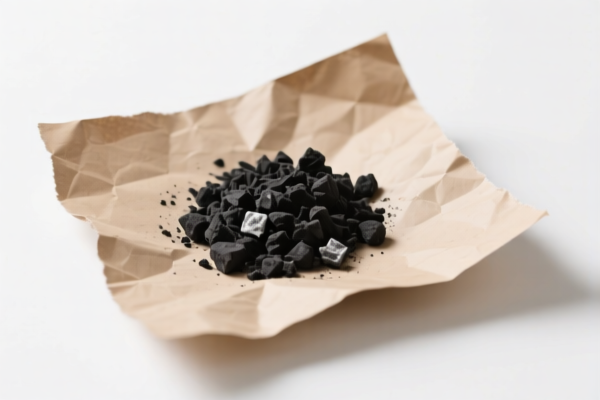| HS Code | Official Doc | Tariff Rate | Origin | Destination | Effective Date |
|---|---|---|---|---|---|
| 2803000010 | Doc | 55.0% | CN | US | 2025-05-12 |
| 2803000050 | Doc | 55.0% | CN | US | 2025-05-12 |
| 2901101000 | Doc | 55.0% | CN | US | 2025-05-12 |
| 2901295000 | Doc | 55.0% | CN | US | 2025-05-12 |
| 2942005000 | Doc | 58.7% | CN | US | 2025-05-12 |
| 2942003500 | Doc | 61.5% | CN | US | 2025-05-12 |
| 7609000000 | Doc | 35.7% | CN | US | 2025-05-12 |
| 7609000000 | Doc | 35.7% | CN | US | 2025-05-12 |
| 9406900190 | Doc | 82.9% | CN | US | 2025-05-12 |
| 9406900130 | Doc | 82.9% | CN | US | 2025-05-12 |
| 7611000030 | Doc | 57.6% | CN | US | 2025-05-12 |
| 7611000090 | Doc | 57.6% | CN | US | 2025-05-12 |
| 7612100000 | Doc | 57.4% | CN | US | 2025-05-12 |
| 7612905000 | Doc | 55.0% | CN | US | 2025-05-12 |
| 2701110000 | Doc | 55.0% | CN | US | 2025-05-12 |
| 2701190050 | Doc | 55.0% | CN | US | 2025-05-12 |
| 2707999010 | Doc | 55.0% | CN | US | 2025-05-12 |
| 3817001000 | Doc | 61.5% | CN | US | 2025-05-12 |
| 3817001500 | Doc | 61.5% | CN | US | 2025-05-12 |
| 3801900000 | Doc | 59.9% | CN | US | 2025-05-12 |
| 3816001000 | Doc | 55.0% | CN | US | 2025-05-12 |
| 3816002050 | Doc | 58.0% | CN | US | 2025-05-12 |
| 3825610000 | Doc | 55.0% | CN | US | 2025-05-12 |
| 3825900100 | Doc | 55.0% | CN | US | 2025-05-12 |
| 3901909000 | Doc | 61.5% | CN | US | 2025-05-12 |
| 3901905501 | Doc | 61.5% | CN | US | 2025-05-12 |
| 3914006000 | Doc | 58.9% | CN | US | 2025-05-12 |
| 3926904000 | Doc | 32.8% | CN | US | 2025-05-12 |
| 3926909910 | Doc | 42.8% | CN | US | 2025-05-12 |
| 3906905000 | Doc | 59.2% | CN | US | 2025-05-12 |
| 3906902000 | Doc | 61.3% | CN | US | 2025-05-12 |
| 4001290000 | Doc | 55.0% | CN | US | 2025-05-12 |
| 4002990000 | Doc | 55.0% | CN | US | 2025-05-12 |
| 4004000000 | Doc | 55.0% | CN | US | 2025-05-12 |




Carbon
Carbon is a chemical element with the symbol C and atomic number 6. It is a nonmetal and is tetravalent—meaning carbon atoms can form four chemical bonds with other atoms. It is the 15th most abundant element in the Earth's crust, and is essential for all known life forms.
Material Properties
- Allotropes: Carbon exists in numerous allotropic forms with significantly different properties. The most well-known include:
- Diamond: Exceptionally hard, transparent, excellent thermal conductor, electrical insulator.
- Graphite: Soft, black, slippery, good electrical conductor, used as a lubricant and in pencils.
- Fullerenes: Spherical or tubular molecules (e.g., buckminsterfullerene - C60), with unique properties.
- Carbon Nanotubes: Cylindrical structures with high strength and electrical conductivity.
- Graphene: A single layer of carbon atoms arranged in a hexagonal lattice, extremely strong, flexible, and conductive.
- Amorphous Carbon: Lacks a long-range order, found in materials like charcoal, soot, and coal.
- Hardness: Varies greatly depending on the allotrope (diamond being the hardest known natural material).
- Density: Ranges from 1.02 g/cm³ (graphite) to 3.51 g/cm³ (diamond).
- Melting Point: Sublimes at around 3,652 °C (graphite). Diamond has a higher melting point, though it is difficult to determine precisely.
- Chemical Reactivity: Forms stable covalent bonds with many elements, including hydrogen, oxygen, nitrogen, and other carbon atoms.
Purpose & Function
- Basis of Organic Chemistry: Carbon's ability to form long chains and complex structures makes it the fundamental element in organic chemistry and the backbone of all known life.
- Energy Source: Fossil fuels (coal, petroleum, natural gas) are primarily composed of carbon compounds and are major energy sources.
- Structural Component: Used in construction materials, composites, and manufacturing due to its strength and versatility.
- Lubricant: Graphite is used as a dry lubricant in various applications.
- Electronics: Carbon materials like graphene and carbon nanotubes are used in advanced electronic devices.
- Filtration and Absorption: Activated carbon is used in filters for purifying water, air, and other substances.
Usage Scenarios
- Jewelry: Diamond is prized for its beauty and durability.
- Cutting Tools: Diamond-tipped tools are used for cutting and grinding hard materials.
- Pencils: Graphite is the core material in pencil leads.
- Batteries: Carbon materials are used in battery electrodes.
- Automotive Industry: Carbon fiber composites are used to reduce weight and improve performance.
- Aerospace Industry: Carbon fiber composites are used in aircraft structures.
- Water Purification: Activated carbon filters remove contaminants from water.
- Air Filtration: Activated carbon filters remove odors and pollutants from air.
- Medical Applications: Carbon materials are used in drug delivery systems and medical implants.
- Steel Production: Carbon is used in the steelmaking process.
Common Types (Allotropes)
| Allotrope | Structure | Properties | Applications |
|---|---|---|---|
| Diamond | Tetrahedral network | Hard, transparent, insulator | Jewelry, cutting tools, abrasives |
| Graphite | Hexagonal layers | Soft, black, conductor | Pencils, lubricants, electrodes |
| Fullerenes | Spherical or tubular molecules | Unique electronic properties | Research, nanotechnology |
| Carbon Nanotubes | Cylindrical structures | High strength, conductor | Composites, electronics, research |
| Graphene | Single layer hexagonal lattice | Strong, flexible, conductor | Composites, electronics, sensors |
| Amorphous Carbon | Lacks long-range order | Variable properties | Charcoal, soot, coal, filters |
| --- | |||
| Based on the material, use, function, and application scenarios, “carbon” can refer to various forms of carbon materials, including carbon black and other carbon products. Here's a breakdown of relevant HS codes based on the provided information: |
-
2803000010: This HS code covers Carbon (carbon blacks and other forms of carbon not elsewhere specified or included) Carbon black.
- 28: Mineral fuels, mineral oils and products of their distillation; bituminous substances; mineral waxes.
- 03: Carbon.
- 000010: Specifically identifies carbon black. The total tax rate is 55.0%, comprised of a 0.0% base tariff and a 25.0% additional tariff, increasing to 30.0% after April 2, 2025.
-
2803000050: This HS code covers Carbon (carbon blacks and other forms of carbon not elsewhere specified or included) Other.
- 28: Mineral fuels, mineral oils and products of their distillation; bituminous substances; mineral waxes.
- 03: Carbon.
- 000050: Covers other forms of carbon not specifically classified as carbon black. The total tax rate is 55.0%, comprised of a 0.0% base tariff and a 25.0% additional tariff, increasing to 30.0% after April 2, 2025.
-
3801900000: This HS code covers Artificial graphite; colloidal or semi-colloidal graphite; preparations based on graphite or other carbon in the form of pastes, blocks, plates or other semimanufactures: Other.
- 38: Chemical products; and preparations of miscellaneous products of the chemical industry.
- 01: Artificial graphite; colloidal or semi-colloidal graphite; preparations based on graphite or other carbon.
- 900000: Other forms of graphite preparations. The total tax rate is 59.9%, comprised of a 4.9% base tariff and a 25.0% additional tariff, increasing to 30.0% after April 2, 2025.
-
2707999010: This HS code covers Oils and other products of the distillation of high temperature coal tar; similar products in which the weight of the aromatic constituents exceeds that of the nonaromatic constituents: Other: Other: Carbon black feedstocks.
- 27: Mineral fuels, mineral oils and products of their distillation; bituminous substances; mineral waxes.
- 07: Oils and other products of the distillation of high temperature coal tar.
- 999010: Specifically identifies carbon black feedstocks. The total tax rate is 55.0%, comprised of a 0.0% base tariff and a 25.0% additional tariff, increasing to 30.0% after April 2, 2025.
-
4004000000: This HS code covers Waste, parings and scrap of rubber (other than hard rubber) and powders and granules obtained therefrom.
- 40: Rubber and articles thereof.
- 04: Waste, parings and scrap of rubber.
- 000000: Covers all forms of rubber waste. The total tax rate is 55.0%, comprised of a 0.0% base tariff and a 25.0% additional tariff, increasing to 30.0% after April 2, 2025.
Customer Reviews
No reviews yet.